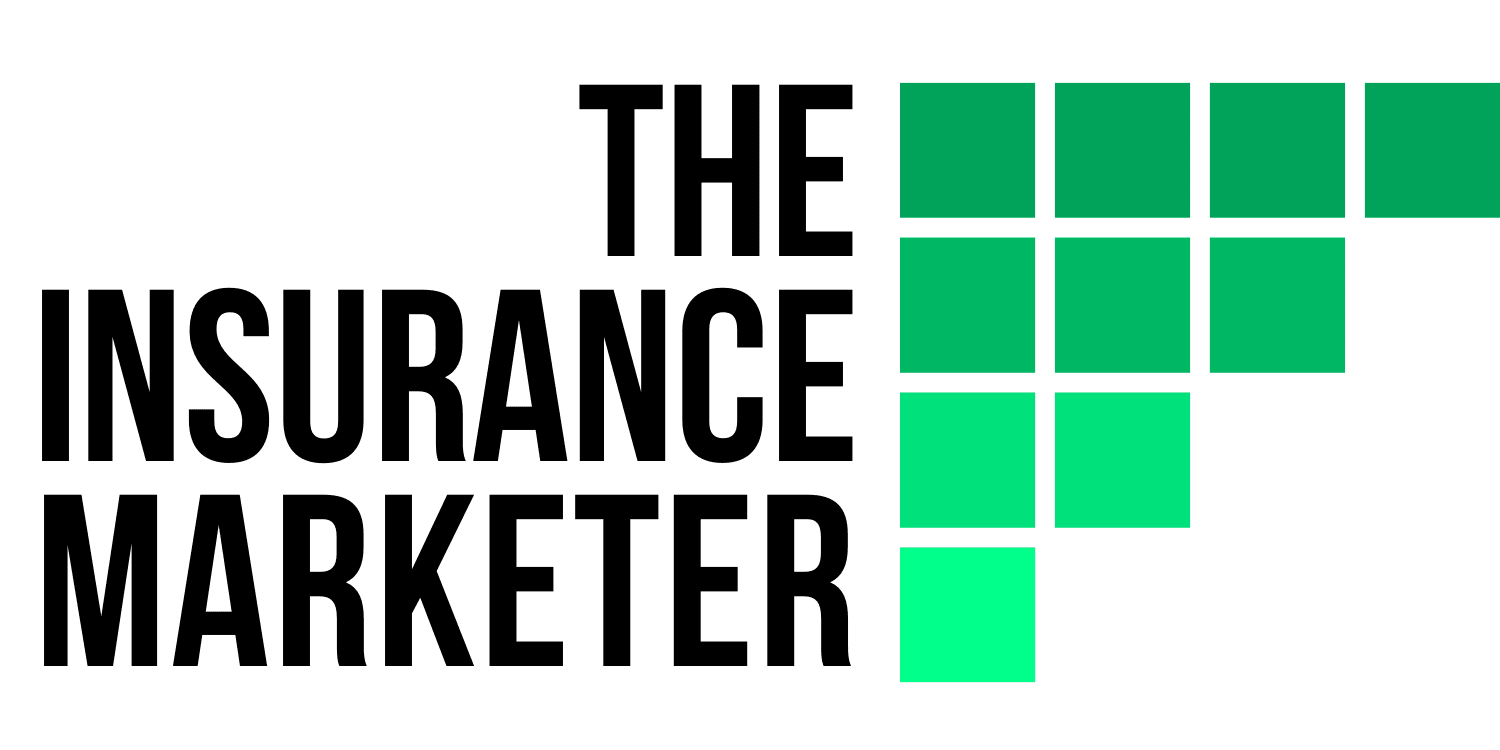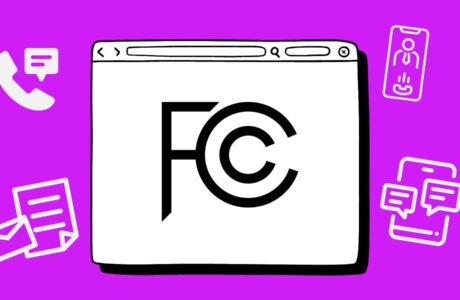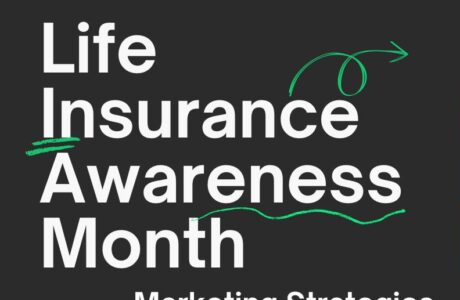With numerous digital marketing avenues at one’s disposal, it might come as a surprise that one traditional method still holds considerable sway: direct mail.
Direct Mail is one of the most traditional forms of marketing for insurance agents and in today’s digital world, is ripe for a comeback.
Think of it like “When everyone goes right go left”. Despite the prevalence of online communications, direct mail remains a great way to cut through the noise.
Direct mail offers a tangible, personalized touch in an era where many interactions are fleeting and digital.
This article dives deep into the world of direct mail for insurance agents and agencies, highlighting its benefits, best practices, and how it can be the game-changer your agency has been looking for.
Understanding Direct Mail Marketing in Insurance
Let’s take a stroll down memory lane. Remember the excitement of receiving a handwritten letter or a special offer in the mail?
That’s the essence of direct mail marketing. It’s a personalized method of reaching out to potential clients or current customers by sending them physical, tangible items like letters, postcards, or brochures.
But wait, in this age of emails, instant messaging, and digital ads, why are we talking about a seemingly “old-school” method?
Interestingly, as our inboxes have become more cluttered, our mailboxes have become an oasis of personal touch.
There’s been a revival of sorts – a resurgence of direct mail marketing. In the midst of our digital world, it has reclaimed its space, reminding us of the power and intimacy of a physical message in our hands.
Why Direct Mail Holds a Special Place for Insurance Agencies:
In the vast sea of digital notifications, where every ping and beep often goes unnoticed, direct mail emerges as a beacon of personal connection.
For insurance agencies, this personal touch is invaluable. Why, you ask?
An email can be deleted in a split second, and online ads can be scrolled past without a second glance. But a well-crafted piece of direct mail? It brings with it a sense of care and attention, a tactile reminder that someone took the time to reach out, especially in an industry as significant as insurance.
Then there’s the undeniable statistic: direct mail simply has higher open rates compared to emails. In fact, 62% of consumers have been inspired to take action on a direct mail piece!
Think about it. How often have you left promotional emails unopened, only to be auto-deleted or lost in the abyss of an overflowing inbox?
In stark contrast, a physical piece of mail almost always gets at least an initial look.
Lastly, there’s the tangibility factor. A physical letter or brochure has weight, texture, and presence. It can be held, read, re-read, and even passed on. It’s not just another fleeting pixel on a screen but a lasting impression in the hands of a potential client. For insurance agents, where building trust and rapport is paramount, this lasting touchpoint can make all the difference.
Unpacking the Advantages: Direct Mail’s Edge for Insurance Agents:
In the marketplace of insurance, standing out is a necessity. So, when considering marketing avenues, why should insurance agencies give a nod to direct mail?
We touched upon some of the benefits compared to digital, but let’s dive into some of the compelling benefits tailored just for agencies like yours:
Pinpoint Accuracy with Targeted Marketing: Imagine sending a bespoke message only to those who are most likely to resonate with it. With direct mail, insurance agencies can tap into targeted marketing, ensuring that their communications are tailored to specific demographics. Whether it’s reaching out to homeowners in a particular neighborhood, young drivers, or families expecting a new baby, direct mail allows for precise messaging that speaks directly to an individual’s insurance needs.
A Pillar of Trust in Paper Form: In the world of insurance, trust isn’t just a buzzword; it’s the foundation of every successful client relationship. And nothing says, “We genuinely care about your well-being,” like a personalized piece of direct mail. It’s a tangible testament to an agency’s commitment, helping to establish and cement credibility in the minds of potential clients. A physical direct mailer can serve as a continual reminder of an agency’s presence and dedication.
A Worthwhile Investment with Tangible Returns: While the initial cost of direct mail might seem higher than some digital campaigns, its ROI tells a different story:
According to Mailing.com, the average ROI on targeted direct mail list purchases is about 43%. They also mention that for every $1.27 spent on direct mail, the average return on investment is $4.09. 🤯
When executed with precision and creativity, direct mail campaigns often yield impressive returns. The direct engagement, combined with the ability to make lasting impressions, leads to higher conversion rates. It’s not just about spending; it’s about investing in a method that has proven time and again to deliver results for insurance agencies.
In the quest to distinguish oneself in the insurance domain, direct mail emerges not just as a throwback to simpler times but as a potent tool finely attuned to modern marketing needs.
Types of Direct Mail Products for Insurance Agents:
In the realm of direct mail marketing, variety isn’t just the spice of life; it’s the secret to effectively reaching diverse clientele. For insurance agents, this means leveraging different types of direct mail products, each with its unique strengths and purposes. Let’s explore some of the most effective options available:
1. Postcards: A Snapshot into Your Offerings:
- Quick Messages to Potential Clients: Postcards serve as concise and direct communication tools. With limited space, they command attention and drive straight to the point, making them ideal for brief but compelling pitches.
- Oversized vs. Standard Postcards: Size matters when you want to make an impression. While standard postcards are classic and familiar, oversized variants offer more real estate for your message and tend to stand out in a pile of mail, catching the recipient’s eye instantly.
2. Brochures: A Deep Dive into Your Services:
- Detailed Information about Insurance Offerings: Brochures unfold a story. With multiple panels, they can comprehensively cover various insurance products, offering insights, benefits, and even client testimonials. They’re perfect for clients who appreciate thorough information before making decisions.
- Importance of Design and Content Placement: A brochure’s effectiveness isn’t just about the information it carries but how it’s presented. Strategic content placement, complemented by engaging visuals and clear headers, can guide the reader’s journey, making the information digestible and appealing.
3. Flyers: The Spotlight on Timely Opportunities:
- Promotions, Special Rates, or Time-Sensitive Offers: Flyers are the go-to for anything that screams “Now!” With their single-page format, they’re geared towards announcements or limited-time offers, ensuring that the reader’s attention is immediately drawn to what’s most urgent or beneficial.
In essence, the diverse palette of direct mail products offers insurance agencies the flexibility to communicate in various tones and depths. Whether it’s a quick hello via postcard, an educational session through a brochure, or a shoutout about a special deal with a flyer, there’s a direct mail format ready to amplify the message.
Best Practices for Insurance Direct Mail Campaigns:
Crafting a compelling direct mail campaign is both an art and a science, especially in the insurance industry where trust and clarity are paramount. For agencies looking to make the most of their direct mail efforts, here are some tried-and-true best practices to keep in mind:
1. Personalization – Making It About Them:
- Using the Recipient’s Name and Specific Details: A simple “Dear [Recipient’s Name]” can make a world of difference. Direct mail that addresses the recipient directly feels less like a broad marketing pitch and more like a tailored communication. Adding specific details, perhaps referencing a previous interaction or a particular insurance need, further accentuates this personal touch.
2. Call to Action (CTA) – Driving the Next Step:
- Clear and Compelling CTAs to Prompt Responses: Every piece of direct mail should have a clear purpose. Whether it’s asking recipients to call for a quote, visit a website, or attend an event, the CTA should be prominent, direct, and enticing. Phrases like “Secure Your Future Today!” or “Discover Unbeatable Rates Now!” can galvanize action.
3. Quality Over Quantity – Making Every Piece Count:
- Importance of Good Design and High-Quality Materials: A direct mail piece represents your agency. Shoddy design or poor-quality print can detract from the message and harm the brand’s image. Investing in professional design and high-grade materials not only enhances the message’s appeal but also underscores the agency’s commitment to quality.
4. Tracking and Analytics – Measuring to Improve:
- Monitoring the Effectiveness of Your Campaigns: Sending out direct mail is only half the battle. The real insights come from tracking how recipients respond. Using tools like unique URLs, QR codes, or dedicated phone numbers can provide valuable data on the campaign’s impact. By analyzing these metrics, agencies can refine their approach, optimizing for even better results in future campaigns.
Challenges in Direct Mail for Insurance & Solutions to Navigate Them:
The promising potential of direct mail for insurance agencies doesn’t come without its share of hurdles. Addressing these challenges head-on can pave the way for a more successful campaign. Here are some common obstacles and strategies to overcome them:
1. Outdated Mailing Lists:
- Challenge: An outdated mailing list means sending materials to individuals who’ve moved, changed needs, or are no longer interested. This results in wasted resources and missed opportunities.
- Solution: Regularly update and clean your mailing lists. Collaborate with third-party services that specialize in verifying and updating address databases. Additionally, encourage recipients to update their details through incentive-driven communications.
2. Managing Costs:
- Challenge: Printing, design, and postage costs can add up, especially for smaller agencies with limited budgets.
- Solution: Opt for bulk printing to get better deals. Use cost-effective materials without compromising on quality. Work closely with designers to optimize designs for more affordable printing options. Lastly, consider the timing of your mailings to make the most of postage discounts or promotions.
3. Measuring ROI:
- Challenge: Unlike digital campaigns where every click can be tracked, measuring the direct impact of a direct mail campaign can seem elusive.
- Solution: Incorporate trackable elements into your mailers. Use unique URLs, QR codes, or dedicated phone numbers exclusive to the campaign. By tracking the responses from these elements, you can get a clearer picture of the campaign’s effectiveness and its return on investment.
4. Standing Out in the Mail Pile:
- Challenge: The recipient’s mailbox can be a crowded place. Ensuring your mailer stands out amidst bills, letters, and other advertisements can be daunting.
- Solution: Invest in standout design elements such as vibrant colors, unique shapes, or textures. Also, consider timing your mailings for days when there’s typically less mail volume, increasing the chances of your piece grabbing attention.
5. Staying Relevant in a Digital Age:
- Challenge: With the rise of digital communication, there’s a perception that direct mail might feel outdated or irrelevant.
- Solution: Combine the strengths of digital and direct mail. For instance, use direct mail to drive traffic to online platforms. Ensure that your direct mail content is in sync with current trends and showcases the latest offerings, making it relevant and timely.
By acknowledging these challenges and proactively seeking solutions, insurance agencies can fine-tune their direct mail strategies, ensuring they reach their target
audiences effectively and efficiently.
Future of Direct Mail in the Insurance Sector:
The resilience and adaptability of direct mail have proven time and again that it’s here to stay. Here’s a possible glimpse into what lies ahead for direct mail in the insurance world:
- Blended Campaigns: Direct mail will increasingly be seen as a component of multi-channel campaigns. Imagine sending a postcard with a QR code that leads to an interactive webpage or an exclusive video, merging the tactile experience of direct mail with the interactivity of digital media.
- Data-Driven Personalization: With the power of digital analytics, insurance agencies can gain a deeper understanding of their clients. This data can then inform and refine direct mail campaigns, ensuring content is hyper-relevant to the recipient.
- Increased Focus on Creativity and Design: In a bid to stand out, insurance agencies will push the boundaries of creativity. From innovative shapes and designs to the inclusion of small gifts or samples, the future of direct mail will be as much about the experience as it is about the message.
Conclusion:
As we’ve journeyed through the facets of direct mail for insurance agencies, one truth stands clear: despite the digital age’s rapid advancement, there’s an undeniable potency in the tactile, personal nature of direct mail. It’s not just about sending information; it’s about forging a tangible connection with potential clients, something that a crowded email inbox often struggles to achieve.
Insurance, at its core, is about trust. And what better way to initiate and reinforce that trust than by reaching out with personalized, carefully crafted messages that recipients can hold, touch, and keep?
Direct mail bridges the gap between the impersonal digital realm and the genuine, human touch that often marks the beginning of a lasting client-agency relationship.
For insurance agencies still on the fence or those looking to rejuvenate their marketing campaigns, now is the opportune moment.
In a world that’s constantly shifting towards the digital, let’s not forget the enduring impact of the personal touch.




